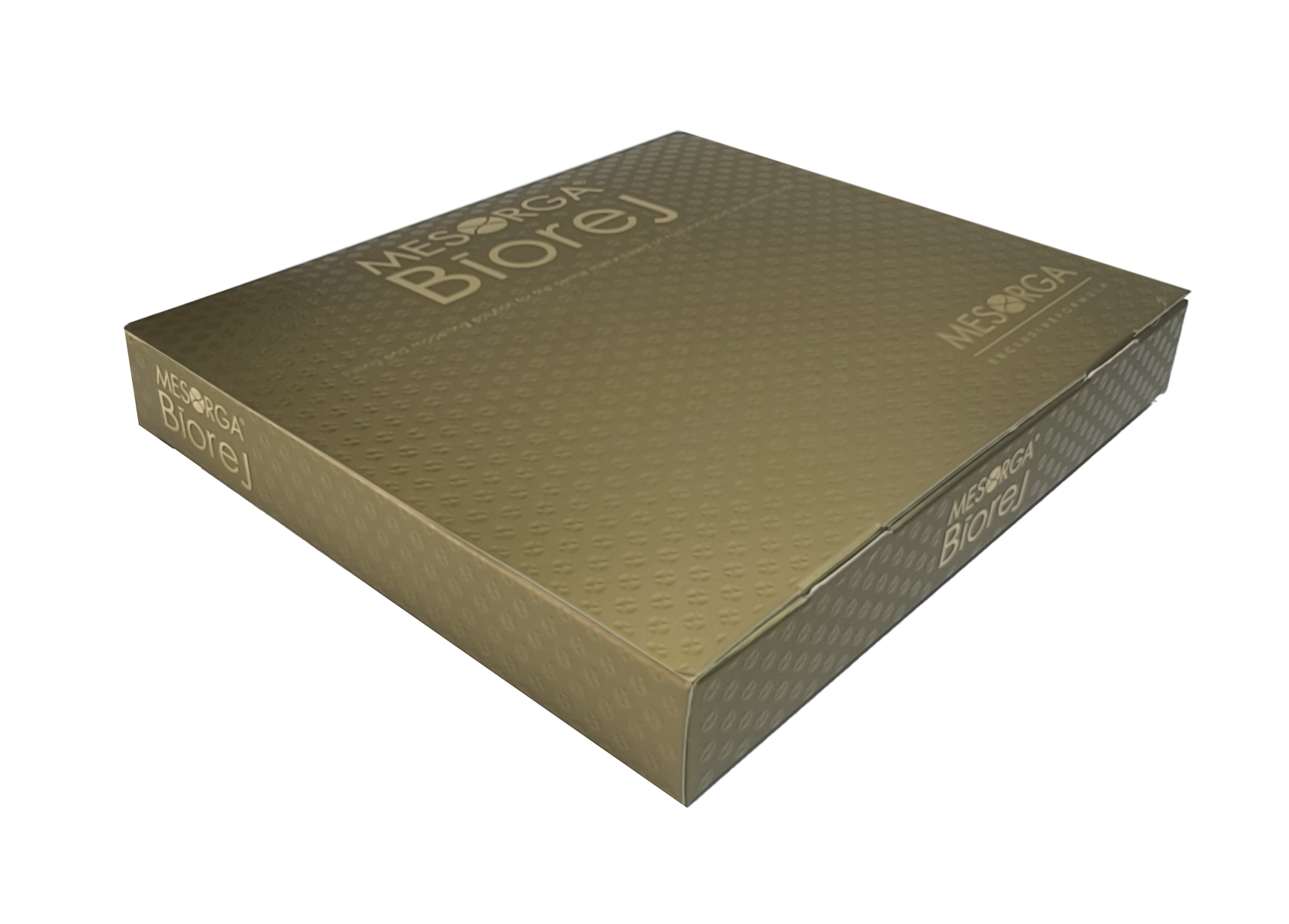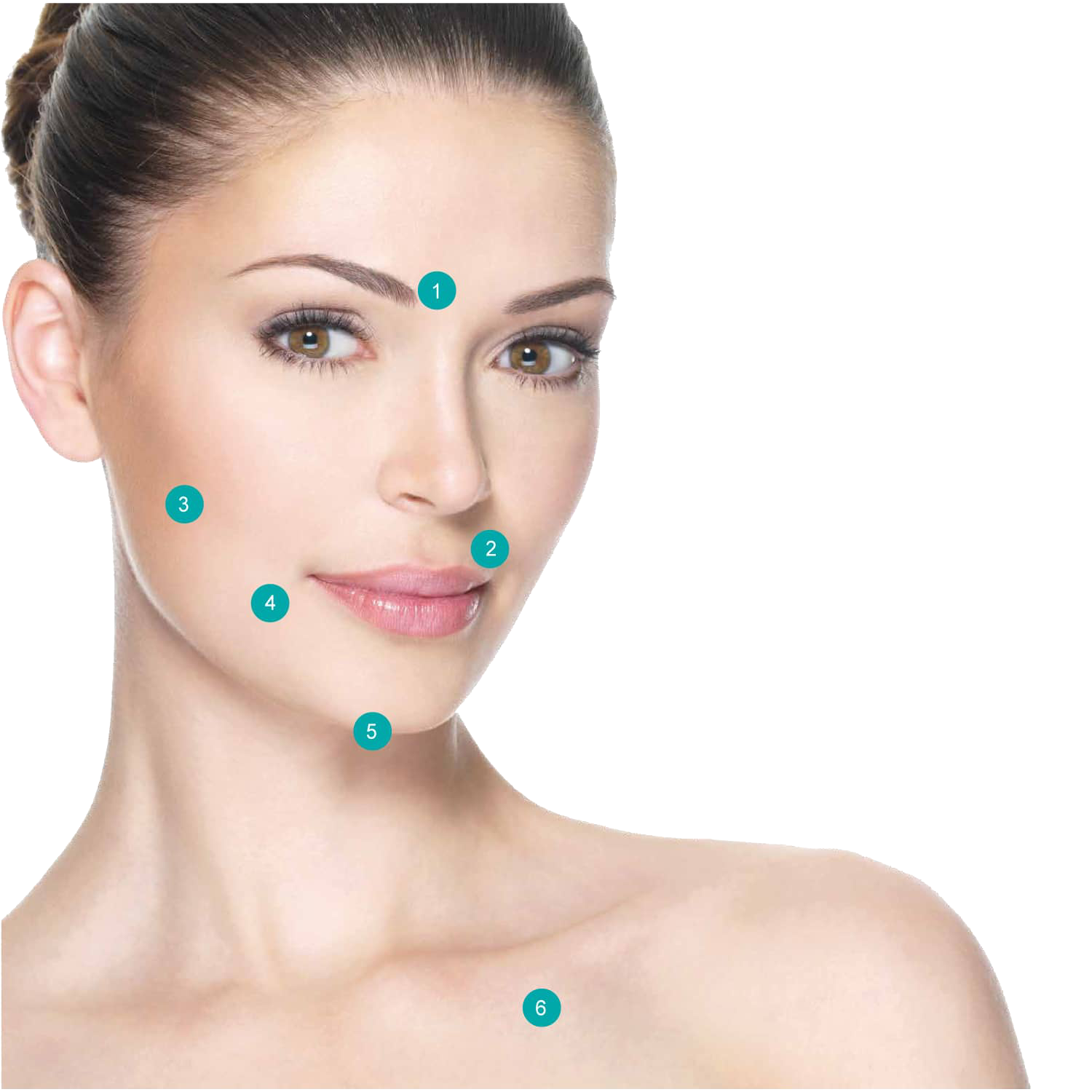MESORGA® BIOREJ is made up entirely of fragments of hyaluronic acid in the range between 20 and 38 monomers and precursor amino acids of collagen, elastin and glycosaminoglycans: among these, Leucine and Isoleucine are two essential amino acids that our body cannot produce on its own, known to support the production of growth hormones, responsible for tissue reproduction and to counteract hair loss; moreover, the combination with the other amino acids Glycine and Proline helps to improve the appearance of the skin due to the function of restoring and increasing hydration, firmness and elasticity.
Lysine plays an essential role in the production of collagen providing stability and resistance to traction of the skin, helping to maintain the tone of the skin surface by strengthening its supporting elements as well as having a repairing function for damaged skin and hair.
Valine, on the other hand, is necessary for the normal functioning of the skin and is very important for the strength of the tissues of our skin.
Cysteine is used to produce the vital antioxidant Glutanion (tripeptide of glutamate, cysteine and glycine) for the detoxification of the skin from all types of pollution and oxidative stress.
Alanine and Serin are part of the non-essential amino acids, or rather those that our body is able to produce, but which are still important:
• Alanine for the elaboration of vitamin B as an anti-inflammatory and also to support the detoxification of the organism;
• Serine which contributes to the production of globulins and antibodies and has very important natural moisturizing properties.
Mesorga® Biorej is also equipped with a bicarbonate-based buffer system, through which, by buffering the acidity of the matrix, it maintains the sol state of the colloidal solution, facilitating metabolic exchange.




























